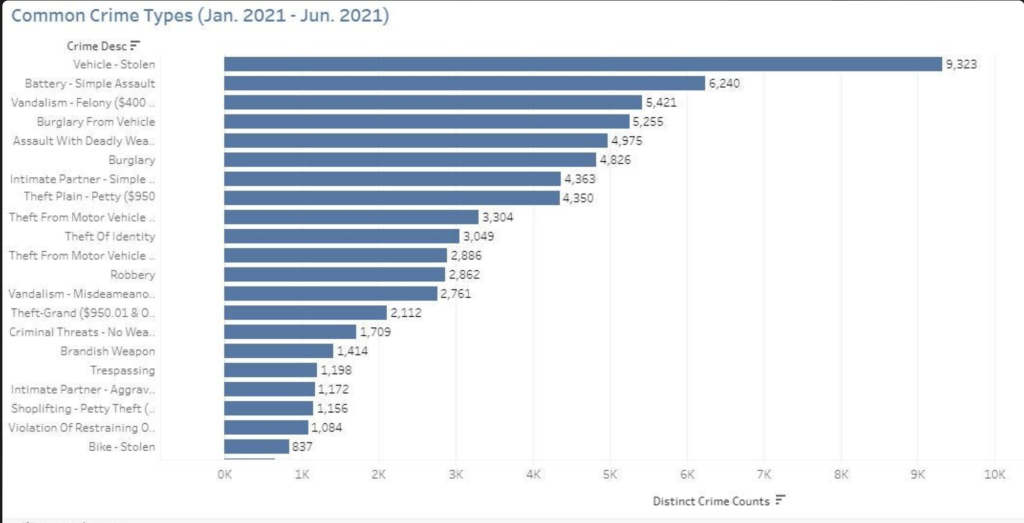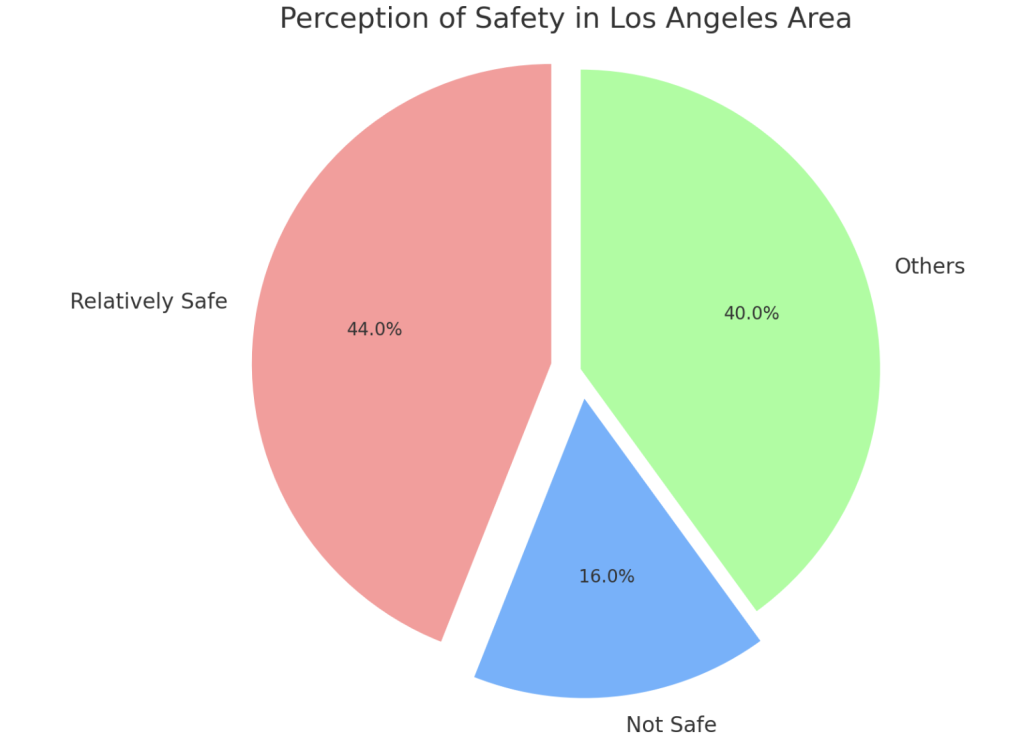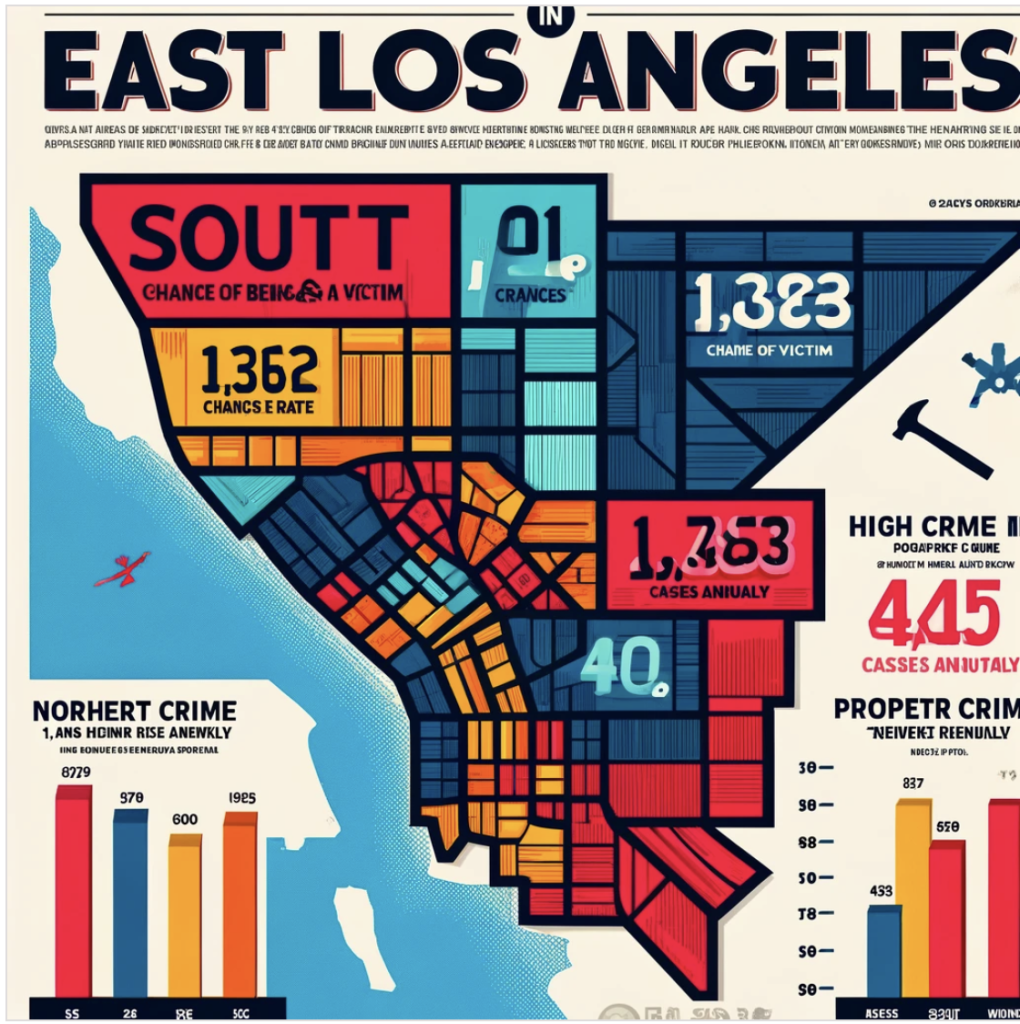Are you worried about your safety in East LA? You’re not alone. Many residents and visitors share concerns about crime rates in this vibrant community.
While East Los Angeles has faced challenges, there’s reason for hope.
By examining crime statistics, community initiatives, and safety tips, we can better understand the current state of safety in East LA.
Join us as we separate facts from fears and explore the steps to create a safer environment for all.
Together, we’ll uncover the truth about crime rates in East Los Angeles and discover how you can contribute to a more secure community.
Current Safety Overview in East LA

Crime Statistics: Overview of Trends
East Los Angeles has experienced significant changes in crime rates over the past decade.
The search results do not explicitly provide crime statistics for East Los Angeles. However, the data from Los Angeles indicates some trends that may be relevant to East LA.
In 2023, Los Angeles saw a 3.2% decrease in citywide violent crimes but a 1.9% increase in Part 1 crimes compared to 2022.
Homicides decreased by 17% citywide, with all geographic bureaus within the LAPD experiencing a reduction.
Property crimes increased by 3.5%, with motor vehicle thefts up by 2%.
The LAPD seized 8,154 firearms, including 1,232 “ghost guns.”
These trends reflect a complex landscape of crime in Los Angeles, influenced by factors like gang violence, drug trafficking, and property crimes, which could also impact East LA.
Detailed Analysis of Crime Types
In East Los Angeles, crime types vary, with property crimes being the most common.
The data reveals that theft, vehicle theft, and burglary are prevalent, with theft having a rate of 12.20 per 1,000 residents, vehicle theft at 6.550, and burglary at 7.532.
Additionally, drug crimes are notable, with a rate of 11.77 per 1,000 residents.
Violent crimes, including assault, robbery, rape, and murder, have lower rates compared to property crimes.
Assault has a rate of 3.362, robbery at 2.705, rape at 0.4184, and murder at 0.0308 per 1,000 residents. Understanding these crime types is crucial for addressing safety concerns in East LA.
A diagrammatic representation can visually depict the distribution of these crime types, highlighting the prevalence of property crimes like theft, vehicle theft, and burglary compared to violent crimes like assault, robbery, rape, and murder.

Perception vs. Reality: East LA Safety

1. Public Perception
Public perception about the current safety overview against crime in East LA is mixed, with some residents feeling safe and others feeling unsafe.
According to a study, 44% of respondents felt relatively safe, while 16% generally did not feel safe living in the Los Angeles area.
However, the perception of safety may not align with the actual crime statistics.
For instance, while violent crime in Los Angeles has decreased, some residents still feel unsafe due to factors such as food insecurity, housing insecurity, climate, and mental health.

2. Misalignments Between Perception and Reality
The discrepancy between public perceptions and actual crime data is quite striking.
Despite the notable decrease in violent crimes, around 75% of residents continue to express heightened concerns about these incidents.
This misalignment between perception and reality underscores the need for better communication and education about the true state of safety in East LA.
3. Factors Influencing Perceptions
Various factors likely contribute to the gap between public perceptions and the reality of crime in East LA.
One notable influence is media coverage, which often emphasizes isolated violent incidents over broader statistical trends.
This selective reporting can skew perceptions, making it seem like crime is more prevalent than it is.
Personal experiences and societal changes can also shape individual perceptions of safety, even when they don’t align with the overall data.
Addressing these influencing factors is crucial for bringing perceptions closer to reality and fostering a more accurate understanding of East LA’s safety situation.
Factors Influencing Safety in East LA
A. Socioeconomic Conditions
1. Impact of Economic Factors on Crime Rates
It’s well-established that economic conditions play a significant role in shaping crime rates.
Studies have consistently shown that economic downturns and high levels of poverty are correlated with increases in criminal activity.
In East LA, this relationship is particularly evident, with periods of economic hardship often coinciding with spikes in crime statistics.
2. Relationship Between Employment Rates and Crime
Employment opportunities, or the lack thereof, directly influence crime levels in East LA.
When residents struggle to find stable jobs, their likelihood of turning to criminal activities for survival increases.
Conversely, crime rates tend to decline when employment programs and job availability are robust.
B. Community and Law Enforcement Efforts
1. Role of Community Programs in Enhancing Safety
Community-driven initiatives play a crucial role in promoting safety in East LA.
Neighborhood watch programs, youth outreach efforts, and partnerships between residents and local organizations have proven effective in creating a more secure environment.
These initiatives foster a sense of shared responsibility and empower residents to prevent crime and address safety concerns actively.
2. Effectiveness of Local Law Enforcement Strategies
Local law enforcement agencies in East LA have implemented various strategies to combat crime and improve safety.
Increased patrolling, community policing, and engagement initiatives have shown promising results.
Building trust and collaboration between officers and residents has reduced crime rates and enhanced security.
Areas of Concern and Safety Measures
A. Identified Risk Areas
1. High-Risk Neighborhoods in East LA
The analysis indicates that certain neighborhoods in East Los Angeles have higher crime rates and are considered high-risk areas.
The southeast part of East Los Angeles is generally regarded as the safest, while the southwest neighborhoods have a higher chance of being a victim of crime, with rates as high as 1 in 15.
Regarding property crime, the southwest neighborhoods also show higher rates, with a likelihood of 1 in 24 being a victim.
The northwest parts of East Los Angeles have more reported crimes, particularly property crimes, with about 1,363 cases yearly.
Conversely, the northeast part of East Los Angeles experiences fewer instances of crime, with only 40 cases in a typical year.
These statistics highlight the varying levels of risk across different neighborhoods in East Los Angeles.

2. Factors Contributing to Crime
Various socio-economic factors, urban development issues, and resource disparities contribute to higher crime rates in certain East LA neighborhoods.
For example, limited access to quality education, job opportunities, and community resources can create an environment more susceptible to criminal activity.
Insights from local law enforcement and community leaders suggest that addressing these underlying factors is essential for long-term crime reduction and community well-being.
B. Recommended Safety Practices in East LA
1. General Safety Tips
While East LA has significantly improved safety, following basic safety practices is always prudent.
Residents and visitors should remain aware of their surroundings, secure personal property, and report suspicious activities to the authorities.
Building a strong sense of community vigilance, where neighbors look out for one another, can deter crime and promote a safer environment.
2. Specific Recommendations for High-Risk Areas
For those living in or visiting high-risk neighborhoods, there are additional safety measures to consider.
It’s advisable to avoid walking alone late at night and to stick to well-lit and populated areas.
Plan your route and be aware of any potential safety concerns.
Keep important emergency contact numbers readily available, including local police and community support hotlines.
3. Community and Law Enforcement Initiatives
East LA benefits from several successful safety initiatives and measures already in place.
Neighborhood watch programs have been instrumental in fostering community cooperation and deterring criminal activity.
Increased police patrols and community outreach programs have also played a vital role in improving safety.
Moving forward, new initiatives, such as expanded youth programs and community policing efforts, are being planned to reduce crime further and strengthen community bonds.
4. How Residents Can Get Involved
Residents of East LA have the power to make a significant impact on the safety of their community.
Active participation is key to creating a safer environment for all.
Joining local safety committees, attending community meetings, and engaging with law enforcement are excellent ways to stay informed and contribute to safety efforts.
By working together, residents can help identify areas of concern, develop effective strategies, and build a stronger, more resilient community.
Ongoing Challenges in East LA Safety
East Los Angeles grapples with persistent challenges in crime, with rates slightly above the national average.
The city’s safety ranking falls in the 34th percentile, indicating room for improvement.
Neighborhoods vary in risk, with the southeast being safer and the southwest facing higher crime probabilities.
Property crime rates are notable, with the Northwest experiencing more incidents than the Northeast.
These challenges highlight the need for targeted interventions to address crime disparities and enhance safety in East Los Angeles.
Responses and Strategies to Tackle Challenges

The Los Angeles County Sheriff’s Department is responsible for maintaining safety in East Los Angeles, with units such as the Sexual Assault Center, Domestic Violence Program, Robbery/Assault Team, Safe Streets Bureau, Gang Enforcement Team, Narcotics Bureau, and Parole/Probation Task Force.
These units work together to investigate crimes, reduce gang violence, enforce drug laws, and target parolees and probationers engaged in criminal activity.
The department is committed to understanding each community’s vision, values, and specific needs and administering/developing law enforcement services that respect the desires of each community they serve.
East Los Angeles faces a high crime rate, with a violent crime rate higher than the national average.
The Los Angeles County Sheriff’s Department is responsible for maintaining safety in the area, with various units working together to investigate crimes, reduce gang violence, enforce drug laws, and target parolees and probationers engaged in criminal activity.
Conclusion
East Los Angeles has made significant strides in improving safety and reducing crime rates, but work still needs to be done.
By understanding the current trends, separating perception from reality, and recognizing the factors that influence safety, we can collectively work towards creating a more secure environment for all residents.
The success stories highlighted in this blog post demonstrate the power of community-driven initiatives and collaborative efforts between residents, law enforcement, and local organizations.
While challenges persist in certain areas, the ongoing commitment to addressing these issues through targeted interventions and comprehensive strategies offers hope for a safer future.
As a community, we must remain vigilant, engaged, and proactive in enhancing safety in East LA. Together, we can build a stronger, more resilient neighborhood we proudly call home.






